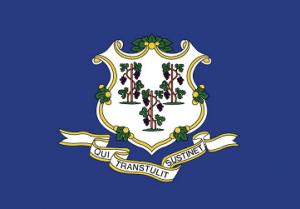Connecticut Affirms Existing TOD Tariff Schedules

The Connecticut Public Utilities Regulatory Authority (PURA) has determined that the time-of-day (TOD) rate structure currently approved for the state's major electric utilities is the appropriate method to use in billing assignments for electric vehicles (EVs). The agency therefore concluded that no separate time-of-day rate specific to EVs is necessary at the present time.
The Authority found that EV owners can benefit from the application of current "whole house" TOD rates, which enable EV owners to save money by charging during off-peak hours. The PURA said that such savings are likely to translate into a positive contribution to future EV growth in the state. It added that it did not see a need for a greater on/off-peak differential at the present time in order to adequately incentivize residential customers to consider EV ownership.
The state's two largest investorowned electric utilities, Connecticut Light & Power Company (CL&P) and United Illuminating Company (UI), had lobbied against the establishment of EV-specific TOD rates, asserting that such would require additional customer meters to be installed to assure separate measurement of the load specific to EVs versus other electric consumption. The PURA agreed that the utilities would have to make a substantial investment in new infrastructure if they were directed to implement EV-only TOD rates.
The Authority acknowledged that there are differences between the two utilities' existing metering technology as well as their processes for converting residential customers to whole TOD rates. For instance, the PURA noted, while more than 60% of UI's residential customers already have smart meters on their premises, CL&P has not deployed advanced metering systems in its service territory. The PURA estimated that CL&P would have to install approximately 1.2 million smart meters in order to register EV-specific usage. It thus ruled that creating EV-only TOD rates would not constitute an efficient use of the utilities' facilities at the present time, and also would raise equity issues among all ratepayers.
The Authority expounded that it was questionable whether EVspecific TOD rates would be effective in encouraging further EV expansion in Connecticut, especially if those rates were cost-prohibitive when the expense associated with additional meters and wiring is taken into account. Moreover, the PURA stated, spreading the costs of EVonly rates among all ratepayers would violate the principle of equitable rates for electric customers, because non-EV residential customers would have to subsidize the EV rate class since the latter is currently so small in volume.
Nevertheless, the agency conceded that as the number of EVs in Connecticut increases, TOD rates will become more important, making it essential that TOD rates be designed in such a manner as to adequately incent EV customers to charge during off-peak hours. To that end, the PURA reminded the parties that it is in the process of initiating a generic docket to study electric utility rate design and cost of service.
The Authority stated that it intends in that proceeding to evaluate the efficacy of adjusting existing on/off-peak differentials. Re Electric Vehicle Time of Day Rates for Residential and Commercial Customers, Docket No. 16-07-21, June 9, 2017 (Conn.P.U.R.A.).



